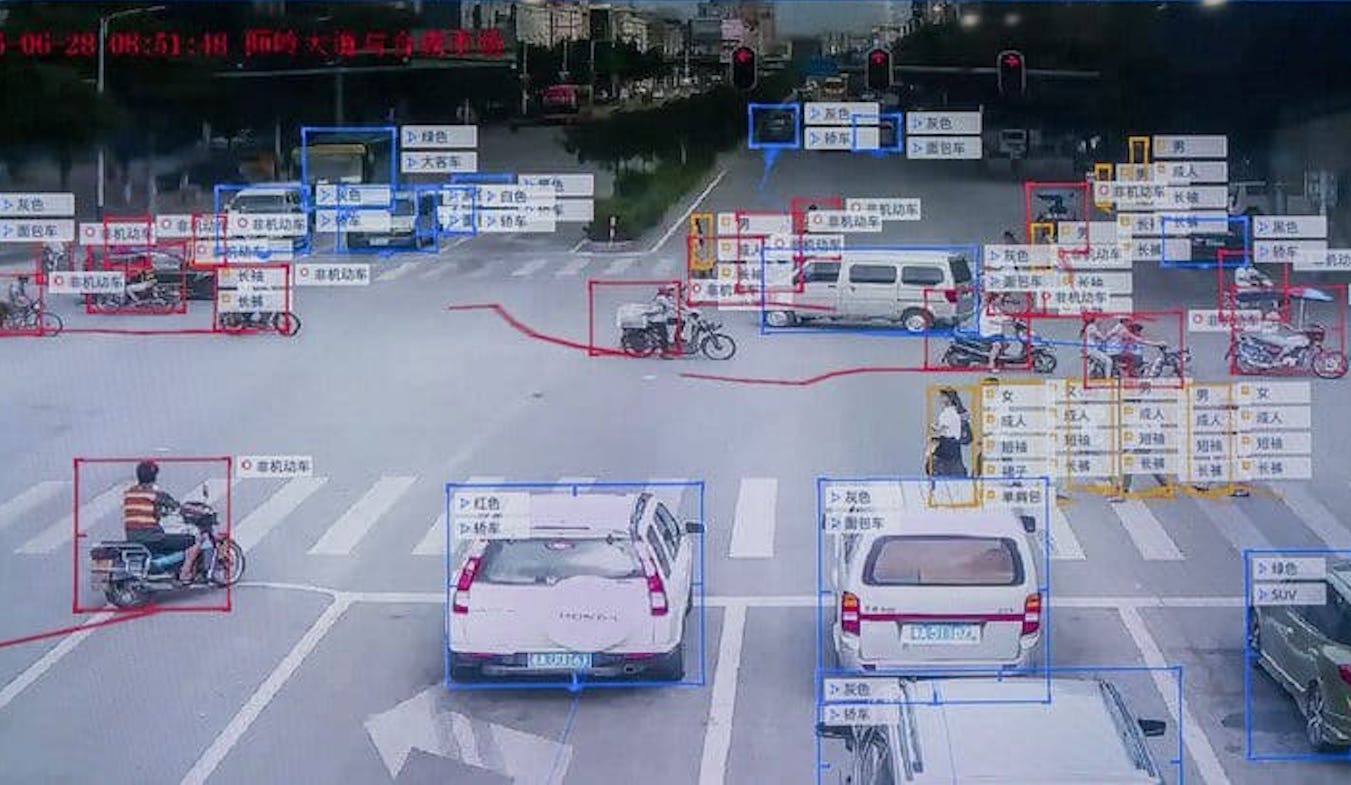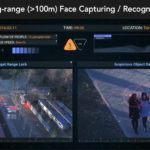

News
China’s people surveillance AI startup tops $4.5B valuation
Chinese AI startup SenseTime, a company that develops people surveillance software for the country’s law enforcement, recently finished a new funding round worth $600 million. The latest round, led by Chinese e-commerce giant Alibaba, raised SenseTime’s total valuation to over $4.5 billion.
According to CB Insights, an analyst firm, SenseTime’s total valuation today has made it the most valuable AI startup in the world. If any, the $600 million funding round proves that even private investors such as Alibaba are taking AI very seriously, and they are willing to provide resources to help companies such as SenseTime grow and thrive.
SenseTime’s business model for its AI solutions is very well balanced. On the one hand, it develops AI-powered services for mainstream smartphone makers such as Oppo and Vivo. Some of these services include the popular “Beautification” effects featured in the smartphone-makers’ camera applications. Even Chinese social media platforms such as Weibo adopt this technology in some form, through the use of AR filters developed by the startup.
- SenseTime’s AI surveillance solutions. [Credit: SenseTime/YouTube]
- SenseTime’s AI surveillance solutions. [Credit: SenseTime/YouTube]
- SenseTime’s AI surveillance solutions. [Credit: SenseTime/YouTube]
On the other hand, however, one of SenseTime’s main solutions is its people surveillance software, which is primarily used by Chinese law enforcement agencies. SenseTime’s AI is currently being used by the security bureau of Guangzhou, one of China’s biggest metropolitan areas with a population of roughly 25 million people. AI solutions include software that can match surveillance footage from crime scenes to criminal database photos. According to a report from The Verge, SenseTime’s people surveillance systems have managed to identify over 2,000 suspects and helped solve almost 100 cases to date.
Perhaps most remarkable about SenseTime is the short time it has taken the AI startup to become such a huge player in the artificial intelligence market. In a statement to the Financial Times, IDG partner Justin Niu stated that Chinese startups such as SenseTime have exhibited impressive growth over the years due to the booming surveillance market in China.
“SenseTime and its competitors can grow so fast compared to elsewhere in the world because video surveillance is a big deal in China, the government controls the budget, and there’s a huge budget for it so they can manage society,” Niu said.
The dash towards AI superiority could ultimately turn into a race between China and the United States. In this regard, China appears set to overtake the US. China has also announced its goal of being a world leader in artificial intelligence by 2030. In Beijing alone, plans are underway to develop and construct a 54.87-hectare tech park that would house up to 400 businesses. Companies in the tech park would delve in the development high-speed big data, cloud computing, biometrics, and most of all, machine-enabled deep learning.
This does not mean that the United States is not taking AI seriously, however. In a recent report, we noted that Michael D. Griffin, undersecretary of defense for research and engineering, recently stated that advancements in artificial intelligence would be valuable in future warfare.

News
Tesla FSD fleet is nearing 7 billion total miles, including 2.5 billion city miles
As can be seen on Tesla’s official FSD webpage, vehicles equipped with the system have now navigated over 6.99 billion miles.

Tesla’s Full Self-Driving (Supervised) fleet is closing in on almost 7 billion total miles driven, as per data posted by the company on its official FSD webpage.
These figures hint at the massive scale of data fueling Tesla’s rapid FSD improvements, which have been quite notable as of late.
FSD mileage milestones
As can be seen on Tesla’s official FSD webpage, vehicles equipped with the system have now navigated over 6.99 billion miles. Tesla owner and avid FSD tester Whole Mars Catalog also shared a screenshot indicating that from the nearly 7 billion miles traveled by the FSD fleet, more than 2.5 billion miles were driven inside cities.
City miles are particularly valuable for complex urban scenarios like unprotected turns, pedestrian interactions, and traffic lights. This is also the difference-maker for FSD, as only complex solutions, such as Waymo’s self-driving taxis, operate similarly on inner-city streets. And even then, incidents such as the San Francisco blackouts have proven challenging for sensor-rich vehicles like Waymos.
Tesla’s data edge
Tesla has a number of advantages in the autonomous vehicle sector, one of which is the size of its fleet and the number of vehicles training FSD on real-world roads. Tesla’s nearly 7 billion FSD miles then allow the company to roll out updates that make its vehicles behave like they are being driven by experienced drivers, even if they are operating on their own.
So notable are Tesla’s improvements to FSD that NVIDIA Director of Robotics Jim Fan, after experiencing FSD v14, noted that the system is the first AI that passes what he described as a “Physical Turing Test.”
“Despite knowing exactly how robot learning works, I still find it magical watching the steering wheel turn by itself. First it feels surreal, next it becomes routine. Then, like the smartphone, taking it away actively hurts. This is how humanity gets rewired and glued to god-like technologies,” Fan wrote in a post on X.
News
Tesla starts showing how FSD will change lives in Europe
Local officials tested the system on narrow country roads and were impressed by FSD’s smooth, human-like driving, with some calling the service a game-changer for everyday life in areas that are far from urban centers.

Tesla has launched Europe’s first public shuttle service using Full Self-Driving (Supervised) in the rural Eifelkreis Bitburg-Prüm region of Germany, demonstrating how the technology can restore independence and mobility for people who struggle with limited transport options.
Local officials tested the system on narrow country roads and were impressed by FSD’s smooth, human-like driving, with some calling the service a game-changer for everyday life in areas that are far from urban centers.
Officials see real impact on rural residents
Arzfeld Mayor Johannes Kuhl and District Administrator Andreas Kruppert personally tested the Tesla shuttle service. This allowed them to see just how well FSD navigated winding lanes and rural roads confidently. Kruppert said, “Autonomous driving sounds like science fiction to many, but we simply see here that it works totally well in rural regions too.” Kuhl, for his part, also noted that FSD “feels like a very experienced driver.”
The pilot complements the area’s “Citizen Bus” program, which provides on-demand rides for elderly residents who can no longer drive themselves. Tesla Europe shared a video of a demonstration of the service, highlighting how FSD gives people their freedom back, even in places where public transport is not as prevalent.
What the Ministry for Economic Affairs and Transport says
Rhineland-Palatinate’s Minister Daniela Schmitt supported the project, praising the collaboration that made this “first of its kind in Europe” possible. As per the ministry, the rural rollout for the service shows FSD’s potential beyond major cities, and it delivers tangible benefits like grocery runs, doctor visits, and social connections for isolated residents.
“Reliable and flexible mobility is especially vital in rural areas. With the launch of a shuttle service using self-driving vehicles (FSD supervised) by Tesla in the Eifelkreis Bitburg-Prüm, an innovative pilot project is now getting underway that complements local community bus services. It is the first project of its kind in Europe.
“The result is a real gain for rural mobility: greater accessibility, more flexibility and tangible benefits for everyday life. A strong signal for innovation, cooperation and future-oriented mobility beyond urban centers,” the ministry wrote in a LinkedIn post.
News
Tesla China quietly posts Robotaxi-related job listing
Tesla China is currently seeking a Low Voltage Electrical Engineer to work on circuit board design for the company’s autonomous vehicles.

Tesla has posted a new job listing in Shanghai explicitly tied to its Robotaxi program, fueling speculation that the company is preparing to launch its dedicated autonomous ride-hailing service in China.
As noted in the listing, Tesla China is currently seeking a Low Voltage Electrical Engineer to work on circuit board design for the company’s autonomous vehicles.
Robotaxi-specific role
The listing, which was shared on social media platform X by industry watcher @tslaming, suggested that Tesla China is looking to fill the role urgently. The job listing itself specifically mentions that the person hired for the role will be working on the Low Voltage Hardware team, which would design the circuit boards that would serve as the nervous system of the Robotaxi.
Key tasks for the role, as indicated in the job listing, include collaboration with PCB layout, firmware, mechanical, program management, and validation teams, among other responsibilities. The role is based in Shanghai.
China Robotaxi launch
China represents a massive potential market for robotaxis, with its dense urban centers and supportive policies in select cities. Tesla has limited permission to roll out FSD in the country, though despite this, its vehicles have been hailed as among the best in the market when it comes to autonomous features. So far, at least, it appears that China supports Tesla’s FSD and Robotaxi rollout.
This was hinted at in November, when Tesla brought the Cybercab to the 8th China International Import Expo (CIIE) in Shanghai, marking the first time that the autonomous two-seater was brought to the Asia-Pacific region. The vehicle, despite not having a release date in China, received a significant amount of interest among the event’s attendees.











